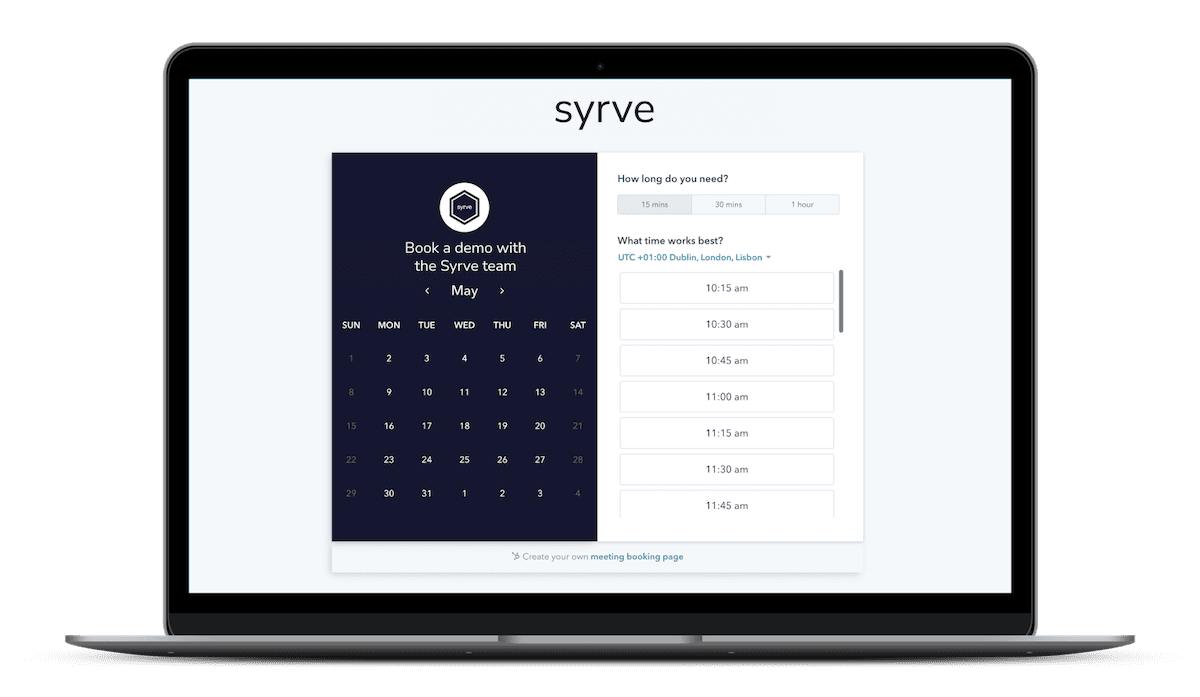It's vital for operations directors to keep a finger on the pulse of their restaurant business. Monitoring the right restaurant metrics isn't just about numbers, it's about understanding the health and success of your operation. Here, we’re going to explore seven key metrics you need to watch — and not just occasionally, but in real-time.
Meaningful key performance indicators (KPIs) are a lot more than just data points. Instead, they're essential tools for anyone managing restaurant operations. In a world where food costs are soaring, margins are tighter than ever, and finding and keeping good staff feels like a daily battle, there's absolutely no space for lacklustre performance.
You need to be on top of your game, ensuring efficiency and optimisation in every nook and cranny of your business.
Before we dive into some of these crucial restaurant metrics, it's important to distinguish the gold from the dross. Understanding which overall metrics and restaurant financial metrics are truly valuable can make or break your business. Don’t think about it as just tracking numbers.
It's more about knowing which numbers give you the real story, steering clear of those that are useless, or worse, misleading. In the upcoming sections, we’ll explore these metrics in detail, helping you focus on what really matters to keep your restaurant thriving and profitable.
Good Figures vs Bad Ones - Trustworthy Restaurant Metrics in Real-Time

For operations directors in the restaurant industry, the difference between good and bad figures isn't just academic – it's the cornerstone of their decision-making process. It's all about having numbers they can trust, numbers that paint a clear and current picture of the business at any given moment.
Now, let's be real – not all data is created equal. What you really don't need is a mix of fresh figures spoiled by pools of stagnant data, muddied by a bunch of 'unknowns'. This is where we often encounter the trap of vanity metrics – those numbers that might look good on paper but don't actually contribute to your restaurant's real performance or bottom line.
They're the flashy figures that promise much but deliver little in terms of actionable insights. Steering clear of these can be a game-changer.
What's essential is an all-in-one system that operates in real-time, breaking free from the shackles of data silos. Such a system should lay bare the true picture of your restaurant's operations – from deliveries and batch production to inventory, breakages, labour costs, sales, and everything in between, at any given moment.
The beauty of this approach is in its interconnectedness. When one number changes, it should ripple across the rest of your data instantly. This level of integration ensures that your insights are not just up-to-date but genuinely actionable.
That's the essence of Next-Gen restaurant technology. In today's fast-paced and competitive environment, this isn't just a fancy tool. It's a necessity for businesses that want not just to survive, but to truly thrive.
Seven Restaurant Metrics to Watch: The Real-Time Game Changers
When it comes to running a successful restaurant, having the right information at your fingertips is crucial. With the right restaurant management software, operations directors can effortlessly access these critical KPIs, whether they're on their laptops or on the go with their mobile phones. These seven real-time restaurant metrics, all accessible via the cloud, are game changers for any food business.
Restaurant Metric 1 - Ingredient Cross-Reference: The Heart of Your Menu

Let's talk about ingredients – the stars of your kitchen. Knowing the role of each ingredient in your menu is crucial, especially when it comes to sourcing enough fresh supplies at the right price. This is about more than simply keeping the pantry stocked.
It's all about smart restaurant stock control, a key financial metric. With an Ingredient Cross-Reference report, you get a comprehensive view of all the products that contain a particular item. It’s like having a magnifying glass over your inventory, ensuring you’re always prepared and cost-effective.
This single insight alone is invaluable for keeping your menu exciting and your costs in check – two things that are vital for any thriving restaurant.
Restaurant Metric 2 - Purchasing Discrepancies – Keeping Track of the Details
Navigating the waters of restaurant management means keeping an eagle eye on every aspect, especially when it comes to purchasing. With Next-Gen tech tools, you're not just ordering supplies, you're mastering one of the crucial restaurant financial metrics – purchasing discrepancies.
How often have you scratched your head wondering if the goods delivered matched your order? Were they on time? Did the quantity and price align with your expectations? Worry no more.
A next-gen restaurant management system is your personal detective, automatically comparing your purchase orders with the purchase invoices used for booking in the goods. It’s like having a financial watchdog, ensuring every order matches up, every time.
This doesn’t just help you to catch errors. It's more about gaining a deep understanding of your purchasing patterns, a critical factor in maintaining the financial health of your restaurant.
Restaurant Metric 3 - Stock Balance – The Backbone of Your Inventory

In the bustling world of restaurant management, knowing your stock balance is like having a crystal ball. It's not just a number, it's a vital restaurant metric that keeps the gears of your business running smoothly. With hi-tech insights, this becomes more than just a routine check – it's a strategic move.
Imagine being able to see, at a glance, the exact number of goods and prepared items you have in stock. Imagine having a bird’s eye view of your inventory, 24/7.
This restaurant metric is essential for monitoring and replenishing your stock, ensuring you’re always ready for the rush of customers. But it goes beyond just restocking. You can use this data to identify and clear out expired foodstuffs, adjust negative balances, and avoid the all-too-common issue of over or under-ordering.
This level of control is key to managing one of the most important restaurant financial metrics – your inventory cost.
So, think of stock balance not just as a number, but as a tool for efficiency, waste reduction, and financial prudence. It's about making smart choices that keep your kitchen running like a well-oiled machine.
Restaurant Metric 4 - Sales Reports for a Specific Period – Your Revenue Radar
Let's talk sales, the lifeblood of your restaurant. It's not just about how much you're making, it's about understanding the hows and whys behind the numbers. This is where restaurant reporting for a specific period come into play, a critical restaurant metric that offers a window into your business’s soul.
Imagine having a dashboard that breaks down everything: the quantity and amount of sales of each item and goods, and that too, location by location. It's like having a financial wizard at your fingertips. You get to see not just what products are selling like hotcakes but also the prices, how many dishes flew off the kitchen counter, the discounts applied, and ultimately, the revenue generated.
This isn't just data. It's actionable intelligence.
This metric is a treasure trove for any restaurant. It helps you to fine-tune your menu, adjust pricing strategies, and even plan promotional activities more effectively. By keeping a close eye on these sales reports, you're tracking performance of course. But you're also setting the stage for future success, making sure every decision you make is backed by solid, real-time data.
Restaurant Metric 5 - ABC/XYZ Analysis of Goods – Fine-Tuning Your Menu for Success
 Diving into the nitty-gritty of your restaurant's performance, we come across a metric that's all about strategic finesse – the ABC/XYZ analysis of goods. This might look like it’s just a set of letters, but it’s a little more than that.
Diving into the nitty-gritty of your restaurant's performance, we come across a metric that's all about strategic finesse – the ABC/XYZ analysis of goods. This might look like it’s just a set of letters, but it’s a little more than that.
It's a roadmap to boosting your restaurant's sales by optimising your menu. Let’s break it down.
The ABC analysis is your culinary crystal ball. It helps you identify your menu’s superstars – the bestsellers that keep customers coming back for more. With this kind of advanced menu management, you can pinpoint which groups of items are flying off the shelves.
This insight alone is pure gold because it instantly empowers you to make smart decisions. Maybe it’s time to bump up the mark-up on that signature dish, find ways to lower costs on popular items, or even say goodbye to the dishes that just aren't cutting it.
But wait, there’s more. The XYZ analysis adds another layer, charting the consistency of your sales. It’s a weather report for your menu – showing you which items have steady demand rain or shine, and which ones are more like seasonal specials.
This combination of ABC and XYZ analysis gives you a powerful tool to fine-tune your menu, focusing on high-margin items with consistent demand. It's not just about what you're serving, it’s about serving smarter.
Restaurant Metric 6 - Revenue Reports – Tracking the Pulse of Your Profits
When it comes to the restaurant biz, knowing where, when, and how your money is rolling in isn't just smart – it's essential. That's where revenue reports come into play, a crucial restaurant metric that offers a clear snapshot of your financial health.
Think of Revenue Reports as your business's financial diary. They're not just about numbers, they're about stories. With these reports, you can dissect your revenue in ways you never thought possible.
Want to know which days of the week bring in the most dough? Check. Curious about which hours are your golden hours? Covered. Eager to find out which waiter is a selling superstar, or which payment type is most popular? It's all there.
And let's not forget about the menu – these reports can break down your revenue by dish category, offering insights that can help you tweak your menu for maximum profitability.
This level of detail is like gold for a restaurant owner or operations director. With revenue reports, you're not just tracking money, you're uncovering patterns, preferences, and possibilities.
It's all about helping you to make informed decisions, whether it’s staffing for the busiest hours, planning promotions, or tailoring your menu to customer preferences. After all, in the world of restaurants, knowledge isn't just power – it's profit.
Restaurant Metric 7 - Profit and Loss – The Big Picture at Your Fingertips

Alright, let's talk about the biggie – profit and loss, the ultimate restaurant metric that every operations director needs to have under their belt. The numbers are more than just numbers, they’re the story of your restaurant's financial journey.
Imagine having the power to view all your revenue streams, alongside your expenditures and losses, in one place.
Whether you're looking for the very latest figures to gauge immediate performance or you want an overview of a specific period, it's all there. And the best part? You can say goodbye to those long hours sweating over spreadsheets. With the right restaurant management system, this crucial restaurant financial metric is available at your fingertips, instantly.
This is where you get a clear, unfiltered view of your restaurant's financial health. It's like having a financial expert by your side 24/7 (but without the hassle). You can see what's working, what's not, and make informed decisions to steer your business in the right direction.
Whether it's tweaking your menu, adjusting your pricing strategy, or re-evaluating your costs, the profit and loss metric gives you the insights you need to make those decisions confidently.
In the fast-paced world of the restaurant industry, staying on top of your P&L isn’t just good practice – it's essential for survival and growth. It’s your roadmap to a profitable future, ensuring you’re always one step ahead in the game.
And There's More: The Power of 'What If' in Next-Gen Restaurant Technology
Think we're done? Not even close. Next-Gen restaurant technology isn't just about keeping tabs on the present, it's about exploring the potential of the future. With a vast array of real-time restaurant metrics at your disposal, you're not just tracking, you're strategising.
Picture this: 'What if' scenarios at your fingertips. Want to know what happens if you tweak the menu, experiment with a new supplier, or make other potential changes? The system's got you covered.
It's not quite a crystal ball but it’s not far off, giving you the power to assess the impact of these changes before you make them. This goes far beyond simple planning. It's smart, data-driven forecasting.
Around the globe, more and more restaurants are waking up to the fact that being data-driven is no longer a luxury – it's a necessity. With this technology, you're not just watching your business, you're actively shaping its future.
You can make changes instantly, optimise performance on the go, and stay ahead of the curve. It's about having a 24/7 insight into your operation, ensuring that every decision you make is informed, strategic, and targeted towards success.
In the world of restaurant operations, knowledge isn't just power – it's profit, it's growth, and it's the edge that sets you apart.
Unlock Your Restaurant's Potential: Embrace the Data-Driven Revolution
As we've explored through the world of restaurant metrics, it's become clear that the key to unlocking your restaurant's full potential lies in embracing the data-driven revolution. It simply isn’t enough to just try and keep up, it's about leading the way in an industry that's evolving faster than ever.
Imagine having the power to predict trends, understand customer behaviour, and optimise your operations down to the finest detail. That's the power of Next-Gen restaurant technology. It's no longer about mere data. It's about actionable insights that can transform your business.
Are you ready to step into this new era of restaurant management? To harness the power of real-time metrics for making informed, strategic decisions? The future isn’t just knocking. it's here, and it's filled with opportunities for those who are ready to seize them.
Don't wait for the future to come to you. Reach out today and discover how Syrve can revolutionise your restaurant. Whether it's managing inventory with precision, optimising your menu, or analysing financial metrics for maximum profit, Syrve is your partner in this data-driven journey. Book a call, explore the possibilities, and take the first step towards a smarter, more profitable restaurant operation.
Your restaurant's success story starts here. Contact us now, and let's write the next chapter together. With Syrve, the future of restaurant management is in your hands.



